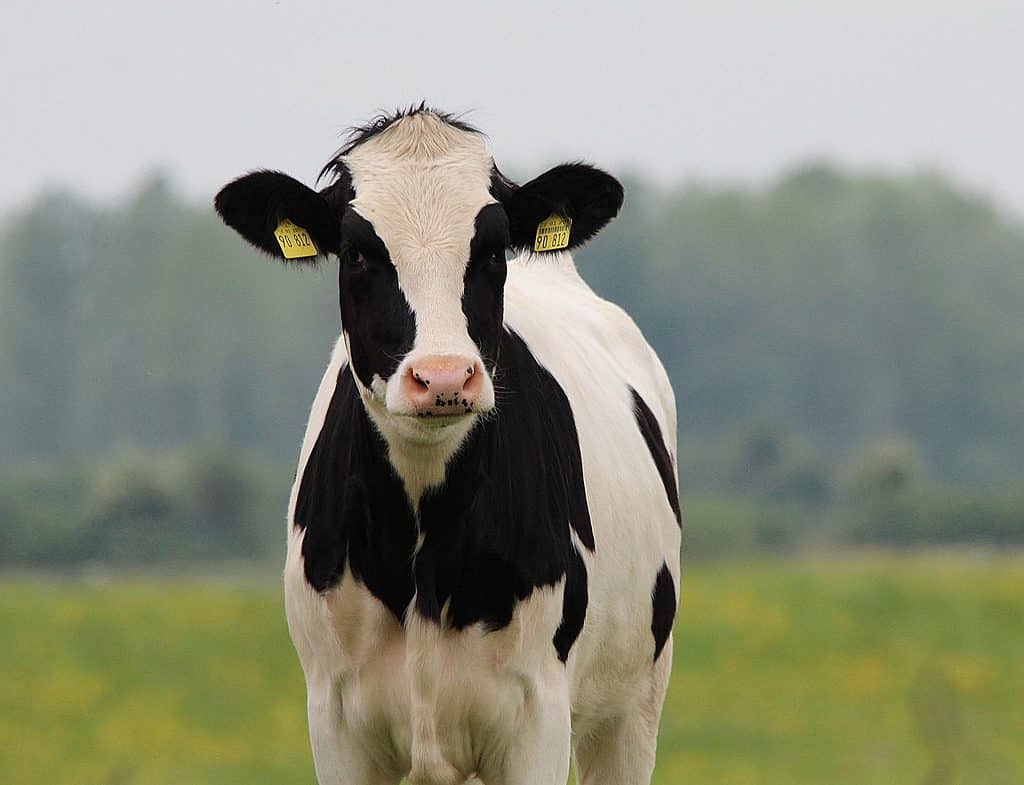
Modern consumers are increasingly demanding ethical practices in animal production systems. People don’t just care about the quality and price of dairy or meat, but also about the welfare of livestock. They are actually being judicious, picking one brand over the other — sometimes even if the purchase comes at a premium — if there’s a certificate demonstrating due diligence and ethical practices in farm animal welfare.
But while a leaf logo on your animal-derived product purchased may be better than nothing, it doesn’t really say all that much. This is why high-tech farming could be a game-changer.
Imagine scanning a simple QR code on a milk carton and instantly receiving information on your phone about the farm and the location where the product was made, but also the health and welfare of the specific cow that produced it — and on the very day that the product was harvested, to boot.
This isn’t just some hypothetical situation. The technology is already here, never mind that you can use a QR code generator since the 1990s, and an EU-funded project called ClearFarm is seeking to implement it.
The approach hinges on precision livestock farming, or PLF, which involves using modern tools like sensors, AI data processing, and automation to gather data and optimize farm output.
PLF is meant to address three key challenges farmers worldwide are currently experiencing, namely how to satisfy an increasing demand for livestock products like meat, eggs, and dairy using less land and fewer employees, all while addressing concerns over the harmful effects of this industry, including global warming, deforestation, and overall environmental degradation.
What ClearFarm wants to do is also have PLF technology address animal welfare, and to do so the project is bringing together all the important stakeholders from six countries, from consumers and producers to regulators and policymakers.
“So far, certification schemes for animal welfare have based decisions on single visits to a farm, maybe once or twice a year, so information is pretty limited,” Dr. Pol Llonch, Technical Project Manager for ClearFarm based at Universitat Autònoma de Barcelona (UAB), told Horizon Magazine.
“ClearFarm will be the first platform to provide non-stop, real-time information on animal welfare. Consumers and producers will be able to view information from every single animal on the farm, every single day of the year.”
For now, ClearFarm will focus on pigs and dairy cattle. The idea is to strap wearable sensors to the animals that continuously collect data on activity, diet, and overall health. Not only will farmers be able to intervene quickly and more responsibly when the system detects a health problem in one of their livestock, but the system will also open a window into the real-time comfort, emotional state, and behavior of these animals.
However, perhaps the biggest impact of PLG on welfare management may be in sheep and goats, which account for 30% of all livestock reared in Europe. Due to the geographic and harsh climatic conditions in which they are often reared, sheep and goats are more vulnerable than other livestock to risks such as disease and predation.
For instance, researchers are working to add sensors to ID ear tags that alert farmers when their sheep or goat lose weight or significantly change their behavior, which may foretell a potential welfare issue. Going a step further, GPS collars would provide important actionable data to improve farm efficiency.
Although precision livestock farming is, for the moment, a very niche approach, it is expanding fast and could conceivably become the norm driven by surging labor costs and growing demand for protein and dairy products. In 2020, the PLG market was worth nearly $3 billion and is expected to reach $4.8 by 2025, with a compound annual growth of 9%.
However, it’s important that this process also involves ethical farming and is attentive to animal welfare. While PLF promises to produce more high-quality beef and dairy with fewer resources and less labor, it’s paramount that this technology doesn’t become just another tool that makes animals suffer en masse cheaper to farmers.




